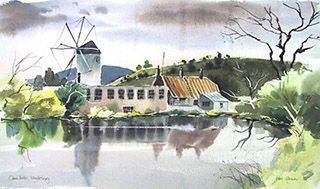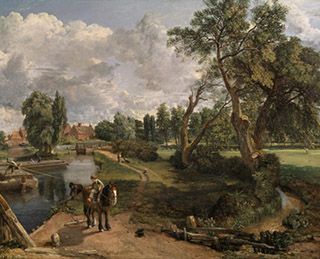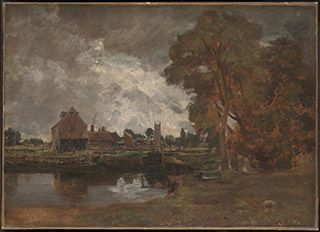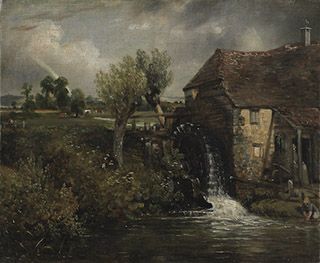The English Mill
Apologies to anyone who did not get the blog yesterday. Our wonderful Matt Cameron has fixed the problem and all is well. I am running yesterday's blog again so apologies if you have already seen this blog.

One of the reasons I have been in England is to walk in the footsteps of some of my ancestors who ran mills for over 400 hundred years around the villages of Melbury Abbas and Cann in Dorset (UK). I had the pleasure of spending a week in the nearby village of Child Okeford and have already introduced you to some of the local artists.
We will start in Dorset and move further afield. Above is a photo of Melbury Abbas Mill which is now a private home. And as it is one of our mills I have painted it as shown below.

And a watercolour painting of another of 'our' mills- Cann Mill is shown below but sadly I do not know the name of the artist. The painting was done between 1960 and 2008 when the owner of the time wanted, what was and still is a watermill, to be designed in the style of a Portugese windmill which I believe was designed by Derek Ogden. (millsarchive.org) The windmill, which was on the roof, was taken down in 2008.

Cann Mill is still a fully operating mill producing superior quality stone ground flour. And if you so desire you can also take panary classes. Here are some of my images of Cann Mill taken last week. From left to right: The mill as it is today, the stone wheels (of different types) used to grind the wheat and the mill pond-the source of the water to drive the wheel.



Let us now turn to look at some paintings of English mills by English painter John Constable who created some remarkable paintings of mills which were the centre of life in rural England. The first is Stratford Mill, London.

And this is Flatford Mill in East Bergholt in Suffolk, UK.

Flatford Mill (Scene on a Navigable River) is painted in oil on canvas. It depicts a working rural scene from Suffolk, as two lighter barges and their crew progress up the River Stour in Suffolk from Dedham Lock. Lighter barges were towed along the river by ropes attached to a horse, which had to be disconnected to allow the barges to be poled under Flatford bridge, which the barges are approaching. In the picture, a boy is disconnecting a rope and another sits astride a tow-horse. The rear scenery depicts the wider view of East Bergholt village, set under a towering trees and a dramatic, cloud-filled sky.(gillinghammuseum.co.uk))
And Constable also painted Dedham Mill in Sussex.

Dedham Mill, like that at Flatford, was owned and operated by Constable’s father. This sketch of it, showing Dedham church to the right, was probably painted on the spot during Constable’s long holiday with his wife Maria in Suffolk in 1817.
As it is unfinished, this work is particularly interesting in revealing Constable’s working methods at this date. Although some passages are painted in remarkable detail, other areas are only broadly blocked in, and much of the brown canvas ground is visible in the foreground and close to the trees on the right. (Tate Gallery label, August 2004)
My favourite mill painting by John Constable is the one at Gillingham in Dorset. And yes we are once more back in this glorious (and my favourite) county.

The mill known today as Purns Mill was formerly known as Parham's Mill from an earlier owner, Matthew Parham, although in the 19th century at least it was also known as Perne's Mill. Constable probably first saw the building during his 1820 visit; certainly in subsequent correspondence with John Fisher he several times expressed his desire to come back "to do something at the mill we went to, that famous mill a mile or two off". In a letter to his wife dated 29 August 1823 Constable records that he had made "one or two attacks on an old mill" which probably is a reference to the studies (pencil or oil sketches) which would have formed the bases for his later studio works depicting Parham's Mill. (gilllinghammuseum.co.uk)
And for tomorrow's blog I promise you something completely different and completely unbridled!!
